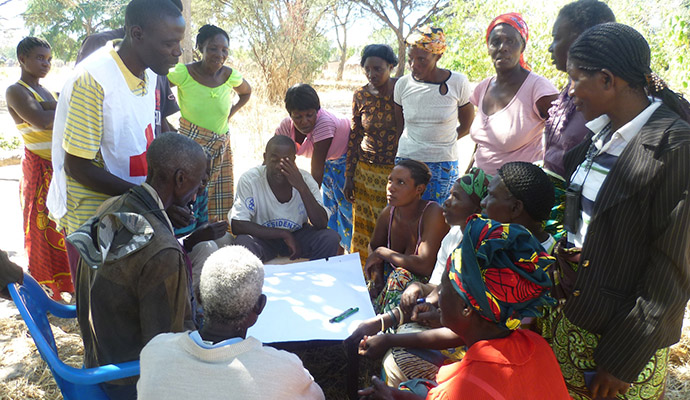Research Highlight |
A Summer in the Bush by Kanmani Venkateswaran
A shift from a reactive role to a more proactive role in disaster response will ensure a more timely and efficient response by the ZRC. Responses to natural disasters, otherwise, have been inhibited by delays in mobilizing funds and supplies. In addition, natural disasters have caused great losses and generated high costs (social and economic) in communities as preparedness and risk reduction measures were not employed before the disaster occurred. Accordingly, the Red Cross is interested in implementing forecast-based early warning systems (EWS) in communities. These EWS will be community-based which means that communities will work in partnership with the ZRC to design, implement and monitor EWS. A major challenge the Red Cross has run into in terms of EWS is funding. Quite simply, donors are not necessarily willing to fund disaster risk reduction before climate disasters occur because climate forecasts come with a high degree of uncertainty and because it is difficult to gauge the full effects of a disaster before the disaster occurs. My role, therefore, was to provide evidence to the donor community that it is worth it to disburse funds before a disaster strikes and that the risk of failing to act outweighs the risk of acting in vain (i.e. if the forecast does not materialize). The Red Cross’ ultimate goal is to set up financial mechanisms that would “automatically” provide funding as soon as a certain science-based early warning threshold is reached. This way, disaster risk reduction and preparedness will not be inhibited by funding. Rather, the availability of funding will accelerate what can be done in the limited time available. I spent the last 3 months conducting flood-based vulnerability and capacity assessments (VCA) with flood prone communities from Kazungula in the Southern Province and Sesheke in the Western Province. We focused on floods because short-term flood forecasts are more robust than longer-term drought forecasts. My research objectives were to understand the nature of floods and vulnerabilities faced by communities along the Zambezi River, establish the scope of early warning systems in these communities and determine what kinds of skills and training are required to enhance ZRC capacity to respond to a disaster. I wrapped up my work in Zambia by writing a report for the ZRC. The most important part of my report was the ‘Recommendations’ section. The main challenge in writing this section was determining how to truly localize EWS in each of the communities. To what extent can the local impacts of floods and local perceptions be generalized across communities? To what extent can the local impacts of floods and local perceptions be generalized within communities? In addition, it was evident that communities do not really understand the definitions of disaster preparedness and risk reduction and what they entail. This requires community sensitization initiatives on the ZRC’s part. But how should this sensitization be conducted and to what extent? Therefore, the biggest challenge was coming up with feasible recommendations that could be employed by the organization. There are several things that the ZRC should do before implementing EWS that seem obvious i.e. community sensitization, localize EWS, conduct more extensive trainings in disaster response for staff and volunteers, etc. But how feasible are these recommendations, especially when funding is so constrained? Is it fair to expect the ZRC to achieve these recommendations, and that too in a short period of time? Working in a more management-oriented scenario (over a more academic scenario) is a whole different ballgame and the learning curve has been significant. It has been very fulfilling to be in a situation where the research I conducted was used right away and will continue to be applied through the design, implementation and monitoring of EWS. I hope to return to Zambia in the near future to further work with the ZRC and the same (and maybe more!) communities on EWS and other disaster preparedness and risk reduction initiatives. Kanmani Venkateswaran |



 I spent the last three months working with the Zambia Red Cross (ZRC) on linking climate forecasts with humanitarian decision-making. This was a part of CU-Boulder’s new collaboration with the Red Cross/Red Crescent Climate Center. The expectation is that climate forecasts will allow humanitarian organizations to anticipate climate hazards and disasters and accordingly implement measures to secure livelihoods and overall improve adaptive capacities of vulnerable communities.
I spent the last three months working with the Zambia Red Cross (ZRC) on linking climate forecasts with humanitarian decision-making. This was a part of CU-Boulder’s new collaboration with the Red Cross/Red Crescent Climate Center. The expectation is that climate forecasts will allow humanitarian organizations to anticipate climate hazards and disasters and accordingly implement measures to secure livelihoods and overall improve adaptive capacities of vulnerable communities.